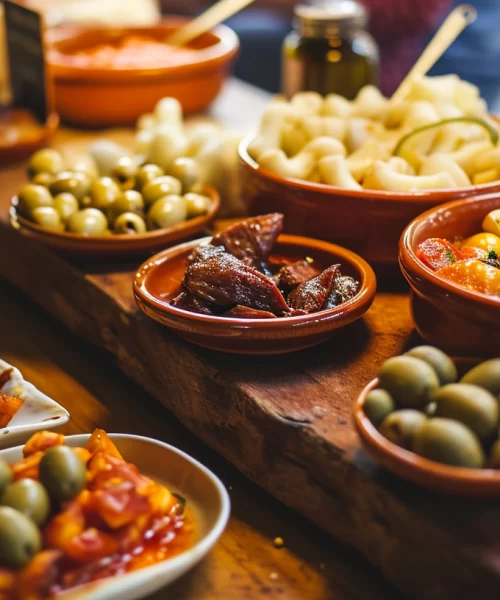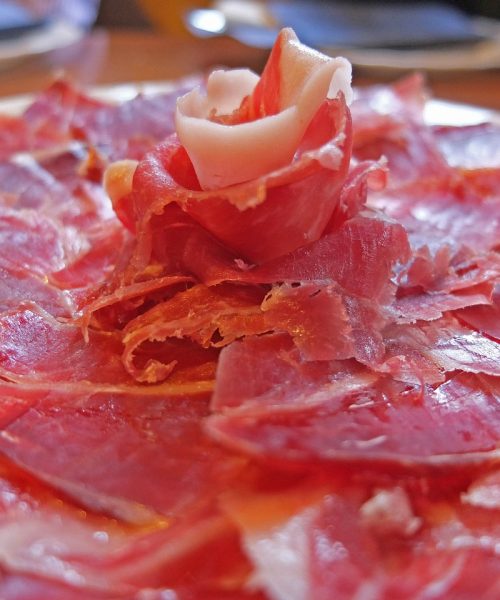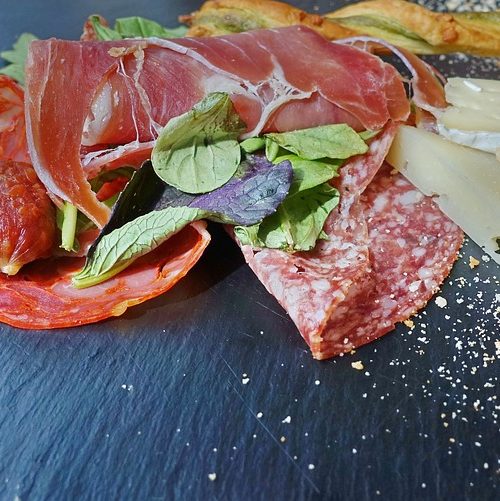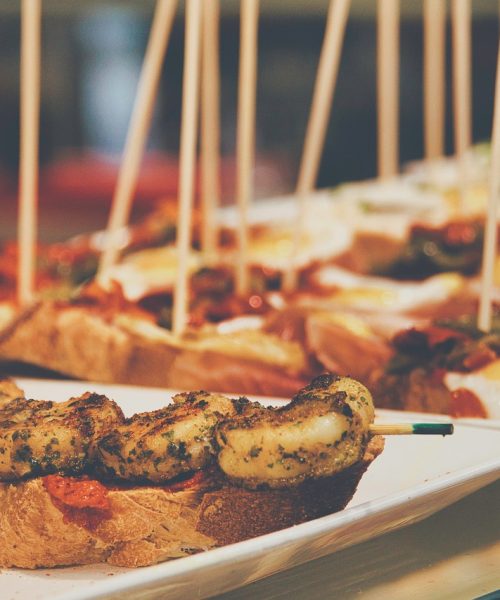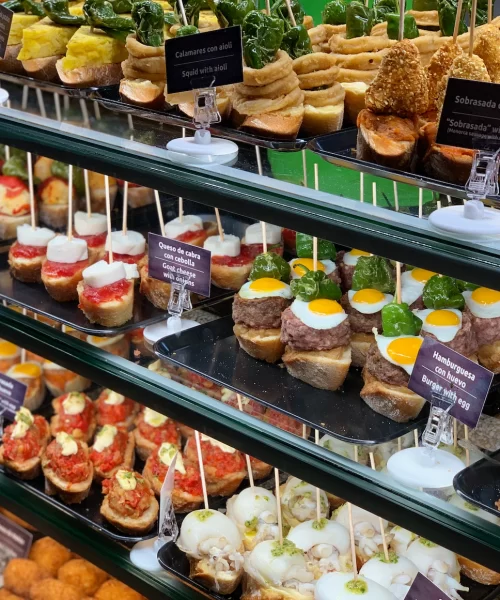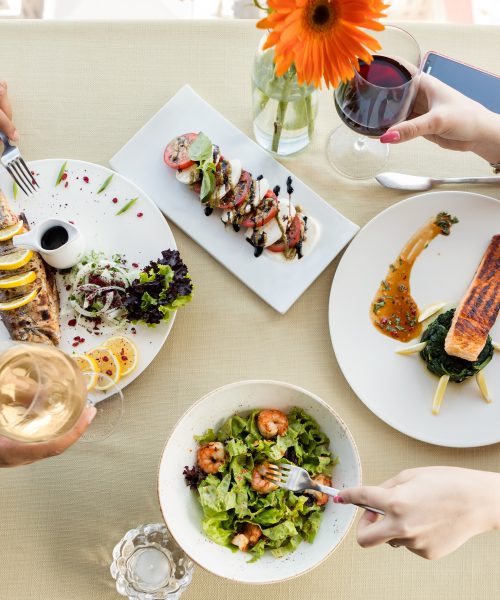Tips For Pairing Wine With Tapas
Whether you are preparing tapas for a party or enjoying a night of fine dining, wine can enhance the flavors of any meal. With so many styles of wine to choose from, it can be hard to decide which one to buy. This article will give you some insight into different types of wine that you might want to consider.
Tempranillo
Tempranillo is Spain’s most widely planted red grape. It’s also the fourth most common red grape in the world. This versatile grape can be found in many countries, including Portugal, Argentina, Australia, and the United States. Here are a few tips for pairing Tempranillo with your favorite foods.
Tempranillo is an ideal wine for pairing with tapas. The grape has a soft texture, and has a rich and spicy flavor. The smooth texture translates to a creamy finish on the palate.
You can pair Tempranillo with a variety of foods, including spicy dishes, meats, and tomato-based dishes. This versatile wine can also pair with cheeses, as well as seafood. It’s also an excellent partner for roasted vegetables. Tempranillo has a good balance between acidity and tannins.
Tempranillo is a grape that has been cultivated in Spain since the Phoenicians arrived in the region. The grape is the primary grape in the Rioja wine region. It’s also used in many other parts of Spain. Tempranillo is one of nine red noble grapes.
There are many different styles of Tempranillo, and the best style depends on the type of food you’re serving. For example, younger Tempranillo works well with tapas, while an aged wine is better suited to grilled meats and heavier dishes.
Cava
Traditionally, Cava wine is paired with tapas. Cava has citrusy and zesty flavours, and a zippy finish. Cava is perfect with cheeses, cured meats, and seafood.
Cava is a Spanish sparkling wine that is made in the same way as champagne. It is made from three Spanish grapes: Macabeu, Parellada, and Xarel*lo. These grapes are blended to produce a high acidity and zesty citrus flavour.
Cava is most popular in the Penedes wine region of Catalonia. It is also produced in the D.O.Cava in other parts of Spain.
Cava pairs well with seafood and salads. It is also a good wine to drink with fried and deep fried foods.
Cava is also a good choice for desserts. It is a great balancer of sweetness and acidity. It can be paired with berries, citrus fruits, stonefruit, and chocolate.
Cava pairs well with seafood and poultry. It can also be used to balance the mild heat of peppers. Cava is best served cold. The best serving temperature is 41-48degF.
Cava wine is also ideal for charcuterie. It goes well with prosciutto di Parma ham. It can also be added to thin-base pizzas. It can also be enjoyed with an aperitif called Gancia.
Fino
Whether you’re eating tapas in Spain or anywhere else, you’ll want to pair your food with a wine that will work well with the taste of the tapas. This is especially important if the tapas contain salt, as the wine must not be too dry. There are a few wine types that work well with tapas, including Fino, a light fortified wine, and Amontillado Sherry.
Fino is a light, fortified wine, made from the palomino grape. It has a fresh taste and a hint of wild herbs. The alcohol level is around 15-18%. Fino is often served before a meal, or with tapas. It pairs well with cured meats, salted almonds, olives, and marinated seafood.
Amontillado sherry is an older form of Fino. This style has increased levels of vanillin and phenols. It is perfect with Iberian meat dishes, especially cured ham and Iberian chorizo.
Fino sherry is made in the Jerez region. It is made from Palomino grapes, which are vinified in stainless steel. The wine is then stored in American oak butts. The flor (a film of yeast) on the surface of the wine prevents it from oxidizing during the ageing process. The flor also adds a nutty flavor.
Manzanilla
Using Manzanilla wine for tapas is a fantastic idea. It is light and flavourful and pairs well with lots of different foods. It is perfect for seafood, tapas and salads. The salty and briny taste of Manzanilla makes it perfect for eating with seafood.
Manzanilla is a dry white wine made from the Palomino grape. It is produced in the town of Sanlucar de Barrameda, in the Cadiz region of Spain. It is the only location where it can be produced.
Manzanillas are aged in barrels that have a layer of flor (frothy white yeast). This layer of yeast helps protect the wine from oxygen and allows for a finer, smoother flavor. The flor also helps to control the texture of the wine.
Manzanilla wines are typically aged for between 4 and 7 years, though they can be aged for much longer. They can also be fortified, making them even more complex and flavourful. They are also known as Pasada wines. They are made from the Palomino grape must, and are aged in the Sanlucar de Barrameda region.
They have a salty, briny taste, and a tingling, umami tang. They pair well with seafood, hard cheeses and aged meats. They are ideal for a picnic or a tapas crawl.
Amontillado
Whether you’re in the mood for some tapas or want to enjoy a finer wine, amontillado wine for tapas can be an excellent choice. This is a dry wine with a nutty taste, which makes it a perfect complement to a wide variety of foods. Often served as an aperitif, it pairs well with tapas, cheese, poultry, and game.
The name Amontillado comes from the Spanish wine region of Montilla-Moriles, near Andalucia. Amontillado is made from the palomino grape, which is harvested early in the season. Typically, the grapes are harvested in the early September.
The colour of Amontillado ranges from pale topaz to amber. This is a result of the wine’s oxidative aging process. It also has an aroma of plants, herbs, and wood. It is best served cold, at about 12-14 degrees Celsius. It has a subtle bouquet and a dry, nutty taste.
Amontillado wines pair well with cured meats, cheeses, and other full-flavoured foods. It’s also good with fish and seafood. This style of sherry pairs well with full dishes, but fried morsels pair best with a lighter style of white wine.
Amontillado sherry has a rich flavor. It’s best served chilled, and will keep up to two weeks. It is fortified to approximately 17.5% alcohol.
Seafood
Whether you are a fan of seafood or not, you’ll probably want to choose a wine that complements the flavours of the dishes you’re serving. Wine and food are intertwined in Spain, and many wines pair well with tapas.
Generally speaking, light and refreshing wines work well with tapas. They don’t overpower the delicate flavours of the food and clean the palate between bites.
Depending on the dish you’re serving, you may want to pair it with a wine that has citrus flavours. Albarino is a good choice for this. The citrus flavours complement seafood dishes, and the minerality of the wine adds a touch of complexity.
White wine is a natural complement to seafood. For example, a light Pinot Grigio works well with oily fish, while a fuller white would be ideal for classic paella.
Red wine is often paired with meaty tapas, and Tempranillo has a lovely acidity that works well with a wide range of dishes. For example, patatas bravas would be best paired with Tempranillo, while chorizo would go better with a red Rioja.
Amontillado Sherry is also a great choice for seafood. It cuts through the subtle fats in red meat, and it also adds nutty flavours to a dish.
Origins
Traditionally, tapas are small plates of food served with a drink. They can be as simple as olives or as complex as a bowl of Serrano ham. The tradition of tapas is a historic testament to Spain’s history. It is believed that the practice originated in Andalucia, a southern region of Spain.
During the Middle Ages, workers would take short breaks to have quick, inexpensive, and easy meals. A light snack kept them alert and maintained energy throughout the day. They would also have a light meal at night to help them sleep more.
As the Spanish and Moors arrived in Spain, they brought ingredients like cured meats, citrus fruits, and olive trees. These ingredients helped bolster Spanish food’s taste. These ingredients were also used in the preparation of gazpacho, a dish that was popular during the summer.
Later, bartenders realized that they could increase alcohol sales by serving snacks. They created a variety of food dishes to serve with sherry. They would usually cover the glass with a thin slice of bread. The lid kept fruit flies away from the drink. This made people drink more.
By the 16th century, Spanish tavern owners didn’t care about the taste of the wine. They just wanted to sell more alcohol. They also discovered that mature cheese would cover a bad wine.

